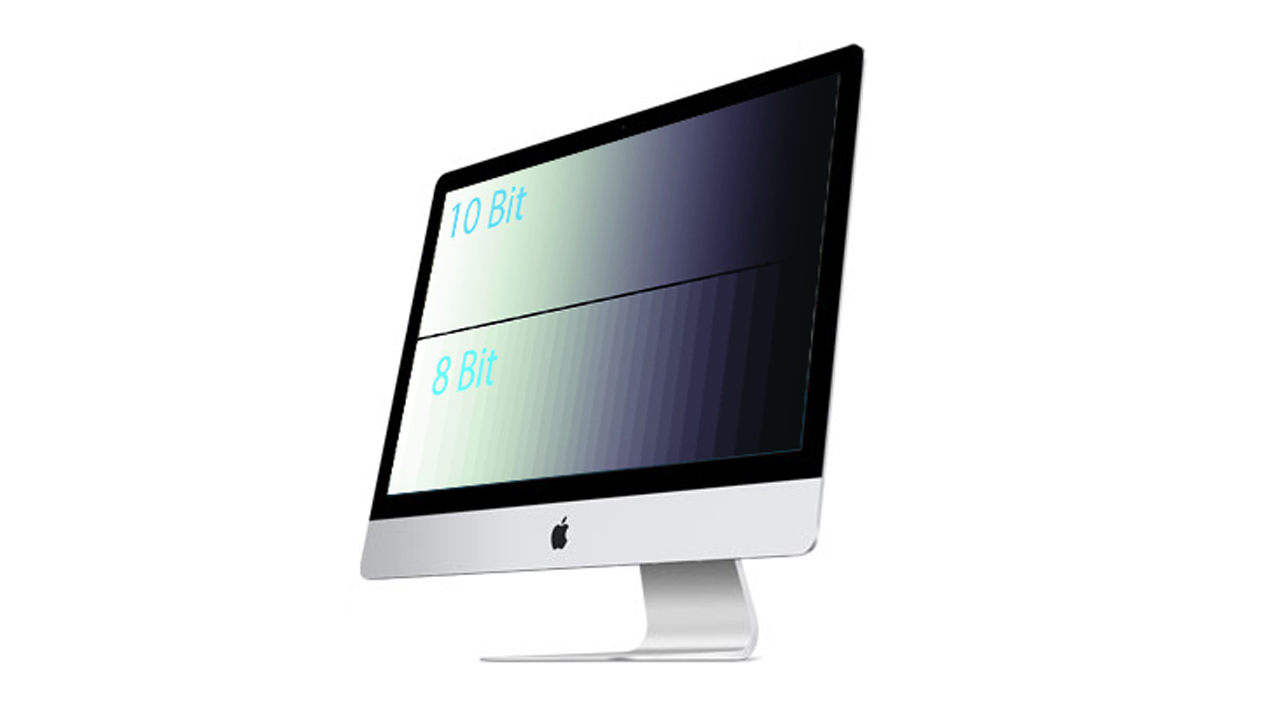10-bit color support discovered in Apple 4K/5K Retina iMac
Color range has a major effect on how images display on a screen, as higher color range allows for smoother gradients, and prevent artifacts as the result of posterization.
An easy way to experience posterization on lower resolution displays is to view a photograph of the sky on an older Apple Mac or Windows PC. The human eye is less sensitive to blues than it is for other colors, which means that to a human, a blue sky will appear mostly flat. The truth is, that the blue of the sky is not flat, but rather made of a continuous, smooth transition, from deeper to lighter gradations.
When visualizing a picture of a blue sky on a display that supports a limited color depth, say 16-bit or 8-bit (again: not range! Depth.) the sky will appear in flat, thick bands in different shades of blue, which used to be a very common occurrence on early PCs of the pre-True Color era.
The standard screen color range for most modern PCs and Macs is 8-bit, which allows for 256 gradations per color channel. Color range is not to be confused with color depth, which refers to the actual number of colors available (yet not necessarily visible) on a screen. For example, on a display that supports 24-bit or 32-bit (True Color) depth (virtually all modern displays), the number of colors available is 16,777,216.
By this token, we can come to the simple conclusion that, no matter how many billions of actual colors a display is capable of showing (range), if the color depth is not enough, image quality will still suffer from unwanted artifacts, especially in highly compressed images.
While 8-bit color range is the standard from Apple Macs to Windows PCs, the advent of higher resolution camera sensors, not only in DSLRs but also on mobile devices, is pushing for increasingly higher resolutions, in both images and video. This might not mean much when viewing a movie or an image slideshow, as the human eye has its own limitations, however, more range has some obvious advantages when editing high-resolution photos and video.

With that said, new iMac Retina 4K and 5K use digital cinema color technology unavailable on any other comparable desktop systems, and for a good reason which is now finally coming to light, with 10-bit color range support in Mac OS X El Capitan, as first reported by German tech news site “Mac & I”.
The discovery of course is merely a formality, as, unfortunately, major software makers, like Adobe and Autodesk, have yet to develop software support, which is now limited to Apple’s own Photo and Preview apps in Mac OS X.
This is due mostly to the fact that display resolution standards have developed at a relatively slow pace, to match a consumer-driven requirement for more desktop real-estate, versus image quality. This has resulted in stifled support for higher color ranges, even in spite of the fact that Microsoft Windows 7 was actually one of the first consumer-focused operating systems supporting 10-bit color range, whether such range were used or not.
What’s the difference between 8-bit and 10-bit color range?
As previously mentioned, 8-bit color range allows for up to 256 gradients per color channel. Each pixel on a display has three channels capable of displaying reds greens and blues, which defines a display as RGB capable, or sRGB, depending on the color depth and range available, and allowed by the driver.
While displaying gradients in 8-bit range shows very little imperfections, if any, editing images or video on a display limited to an 8-bit range means to have to deal with artifacts and other imperfections.
10-bit color range brings the range of available gradients per color channel all the way up to 1024, which is not only great news for artists and photographers, but it also means that video and images on 4K, 5K and even 8K displays will look incredibly sharp and life-like.
By enabling 10-bit color range support in El Capitan, Apple is most definitely preparing for display-focused future updates across the entire Mac lineup, including MacBooks, also in light of the fact that Microsoft has 8K support already available in Windows 10, and a finger on the pulse of home “computainment”, a term likely to catch on, as the Redmond tech giant is already mass-producing Windows 10 HDTVs in India.